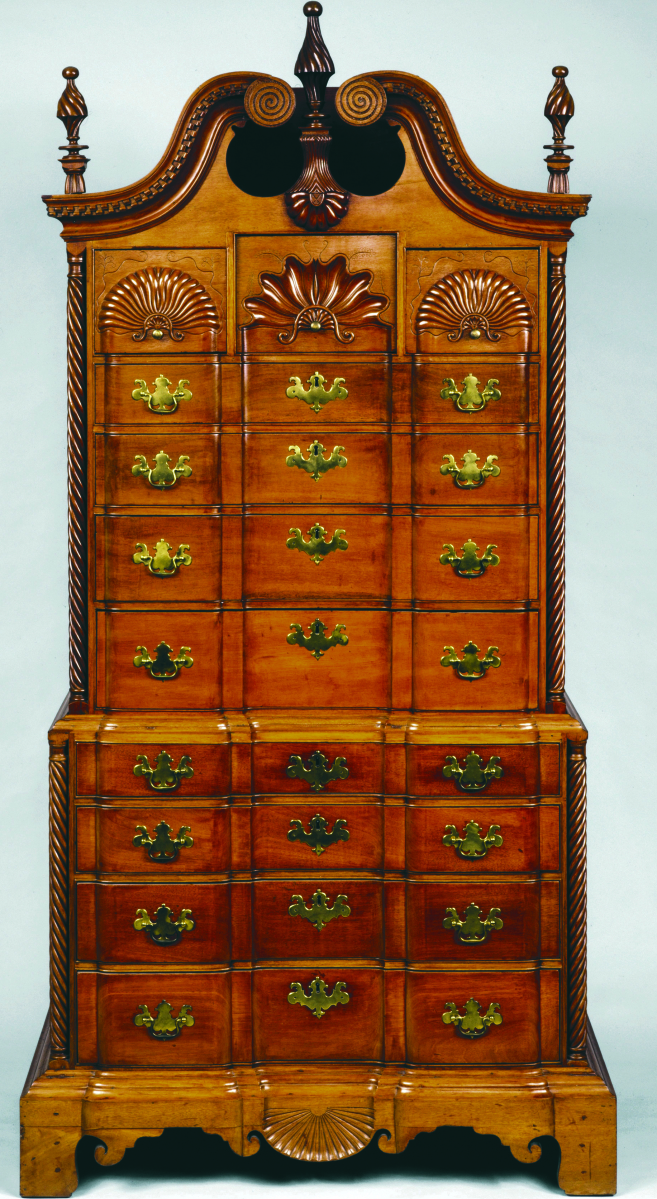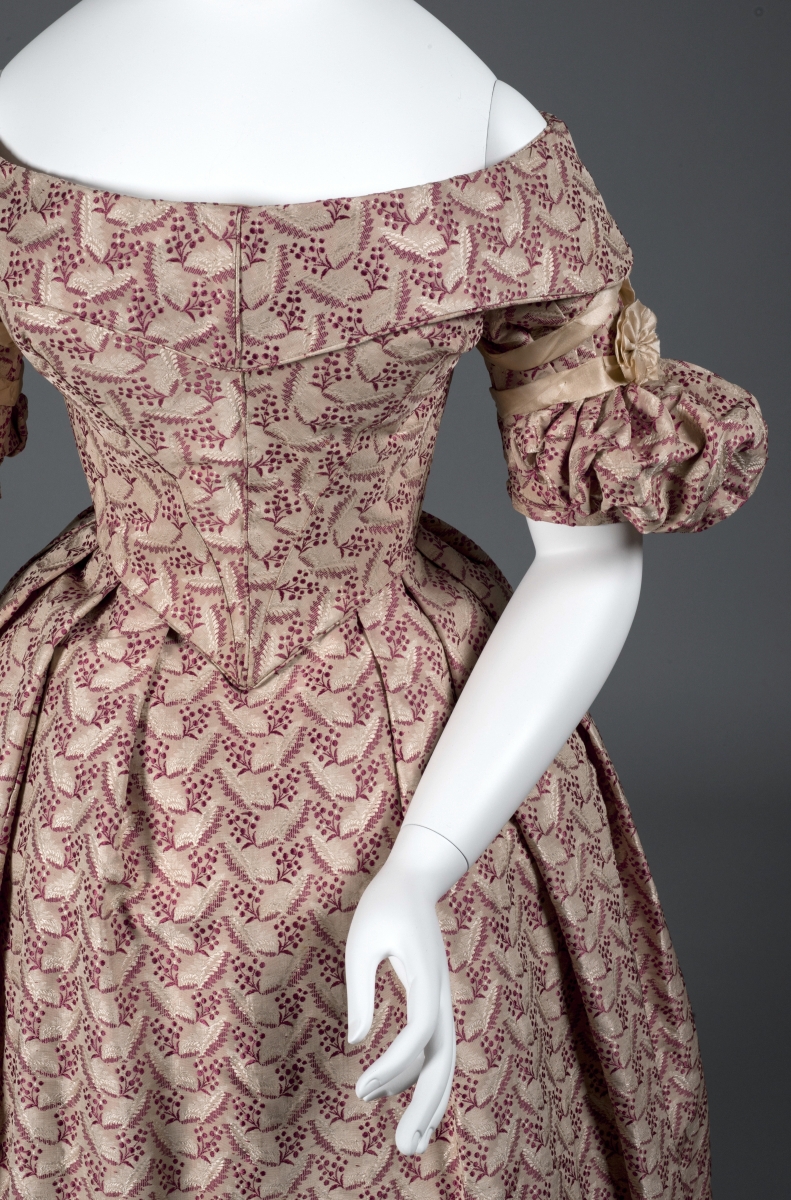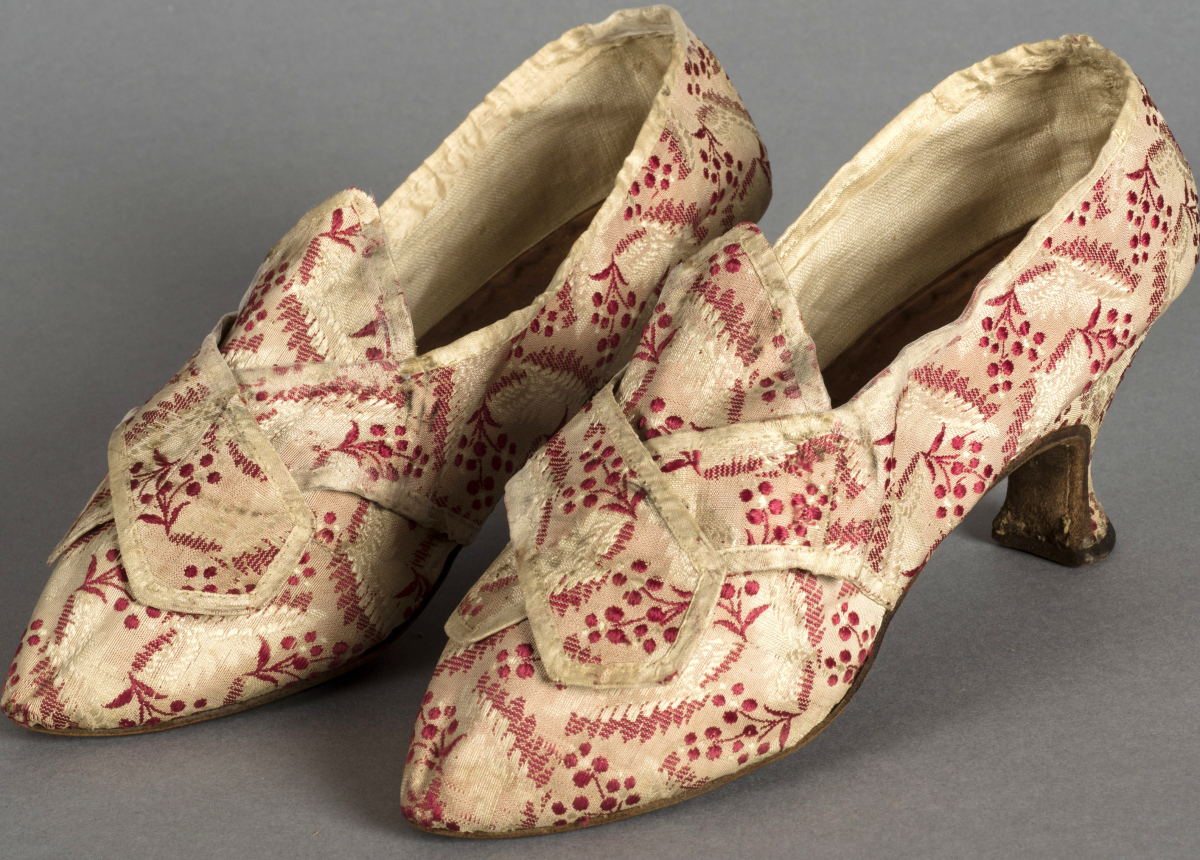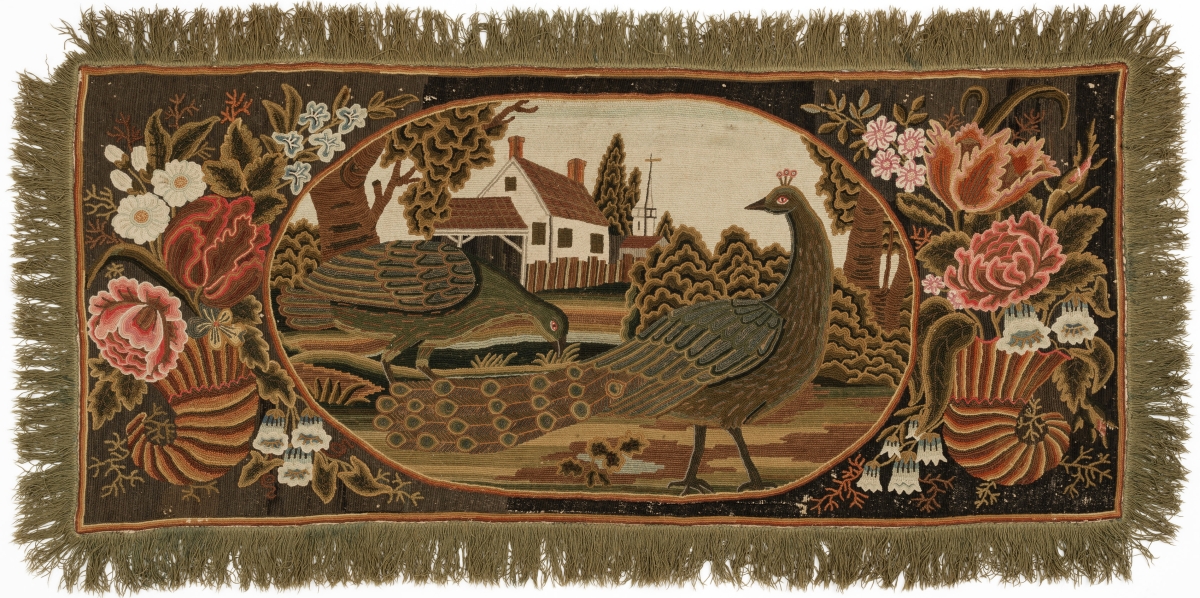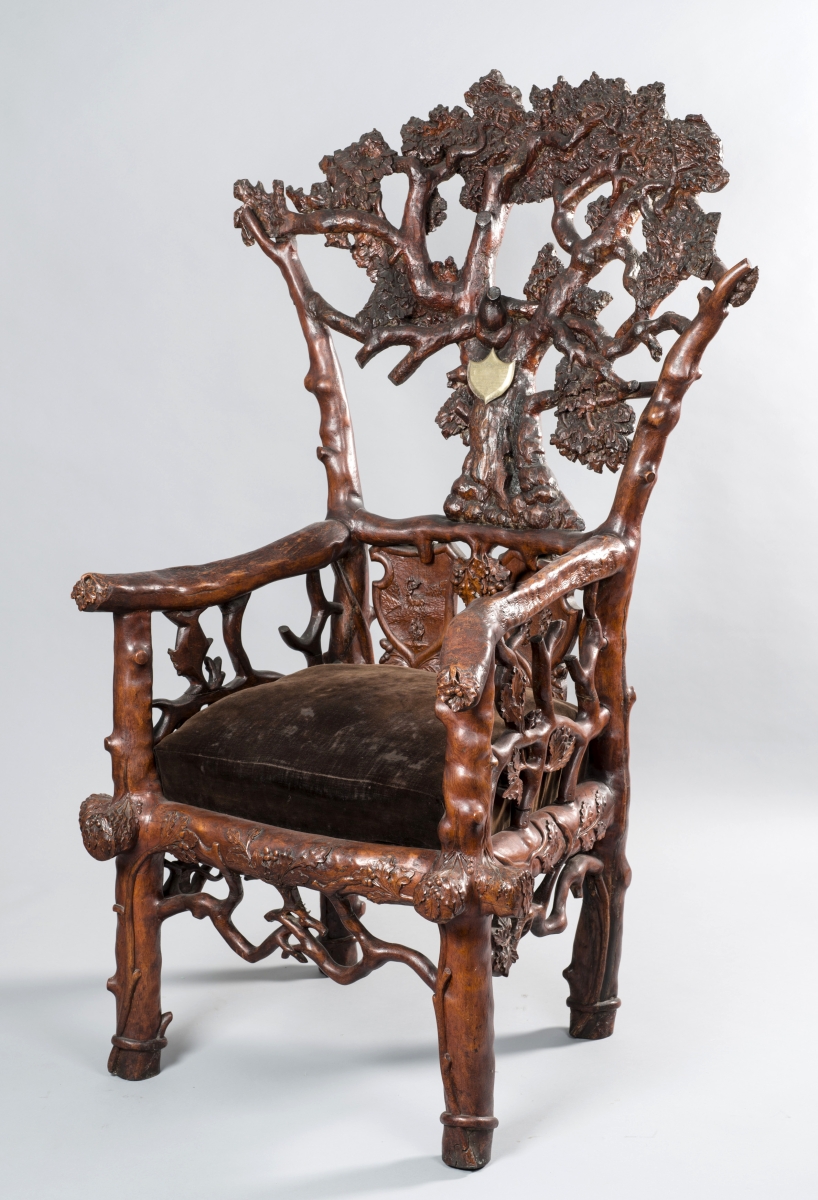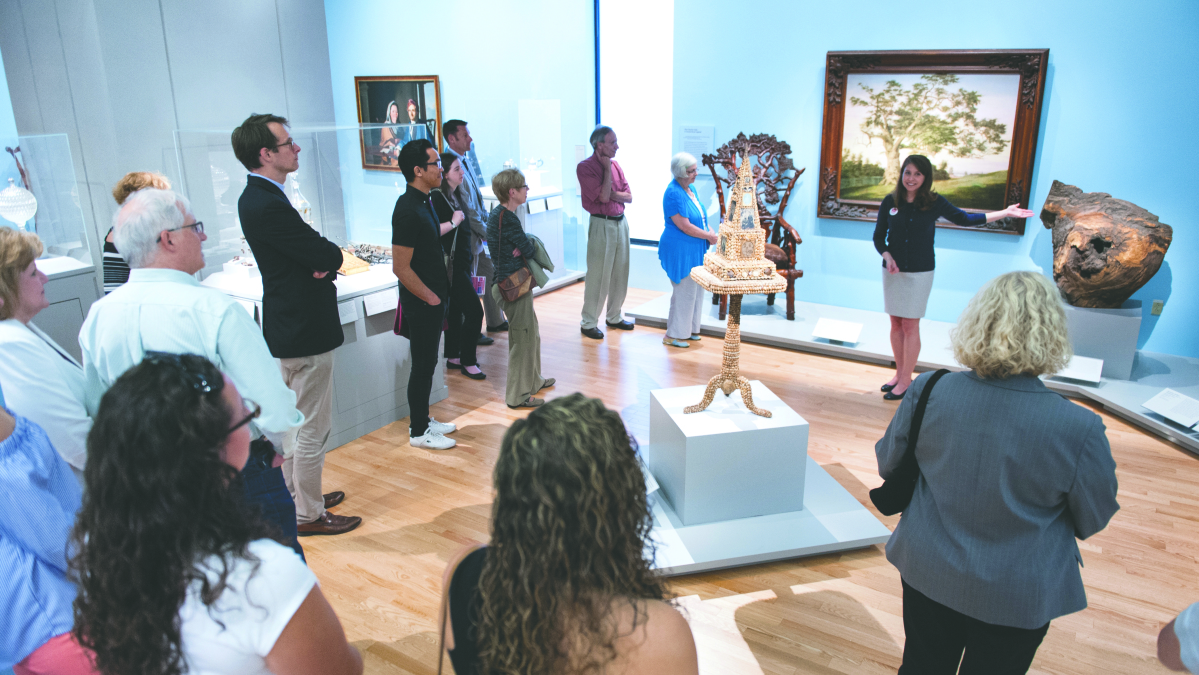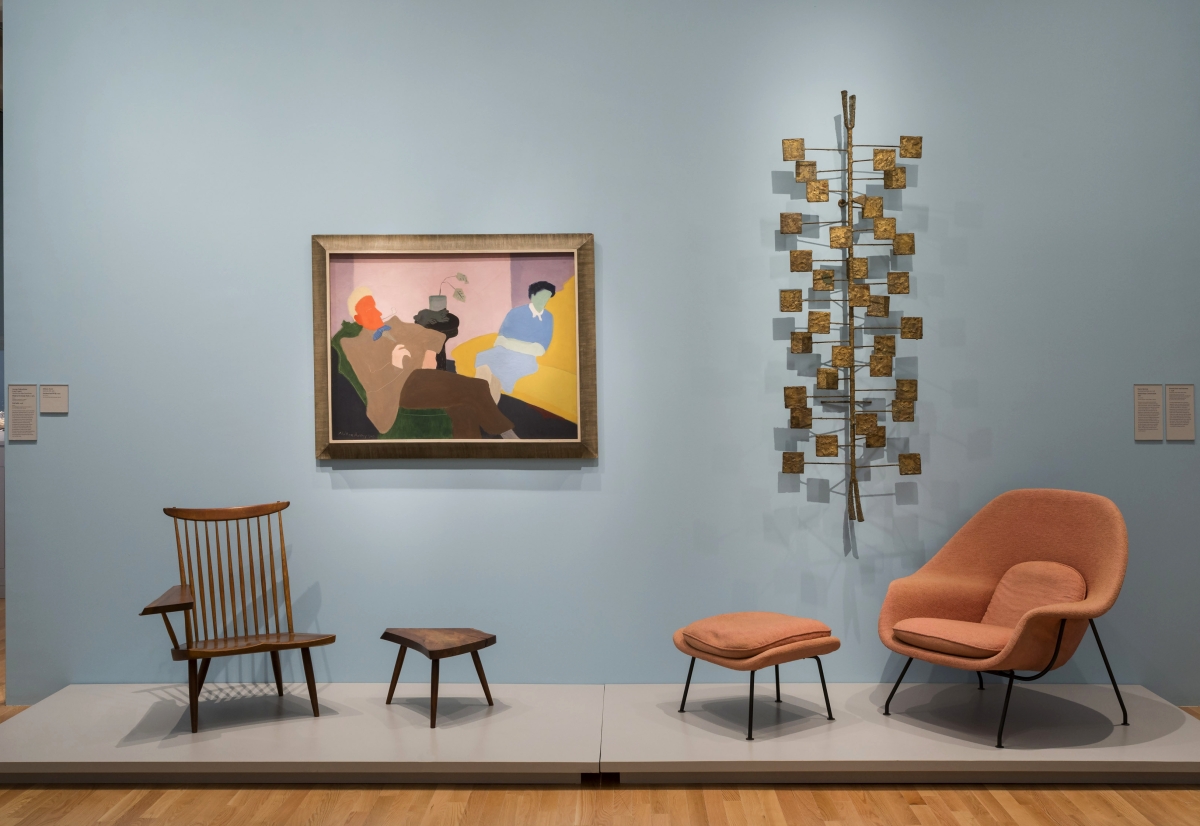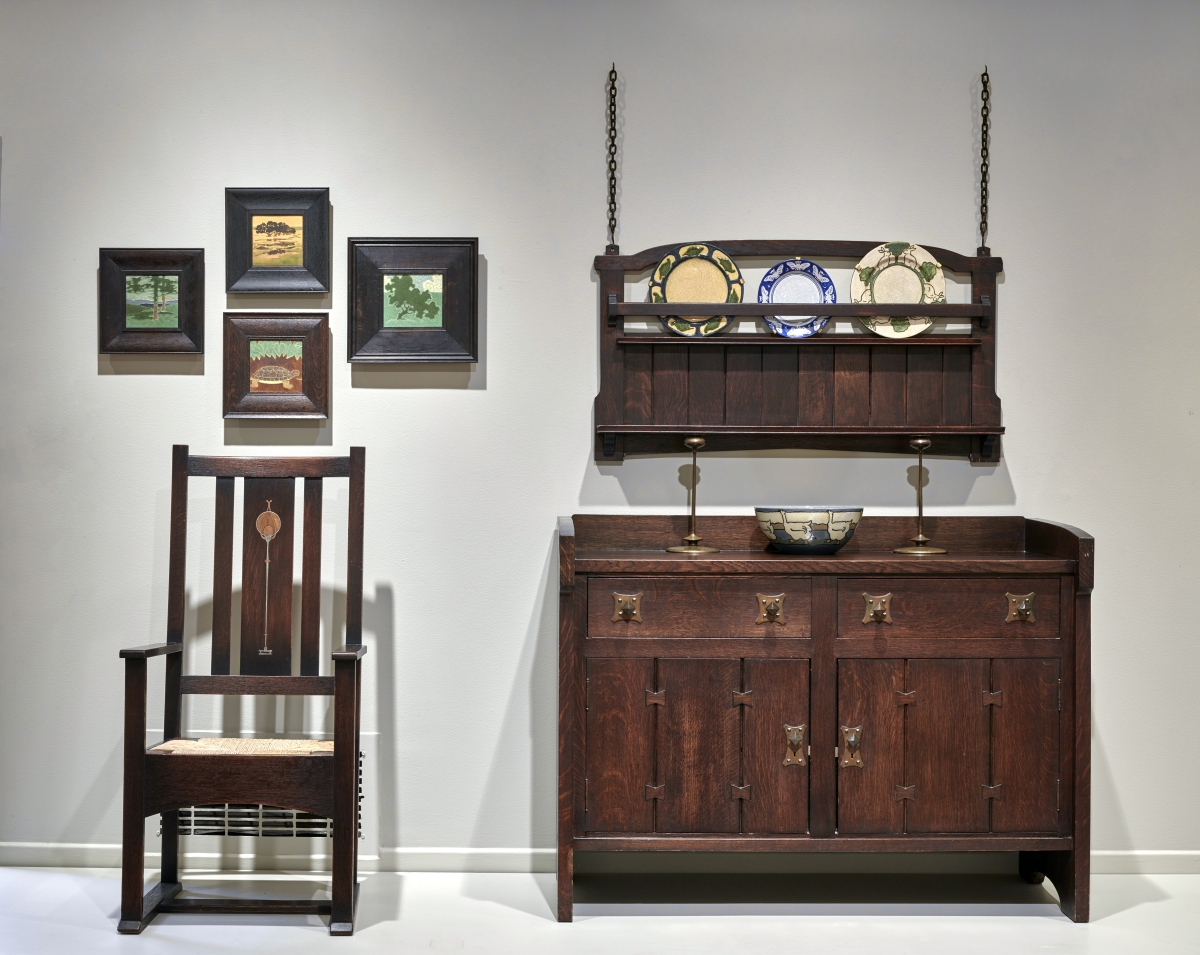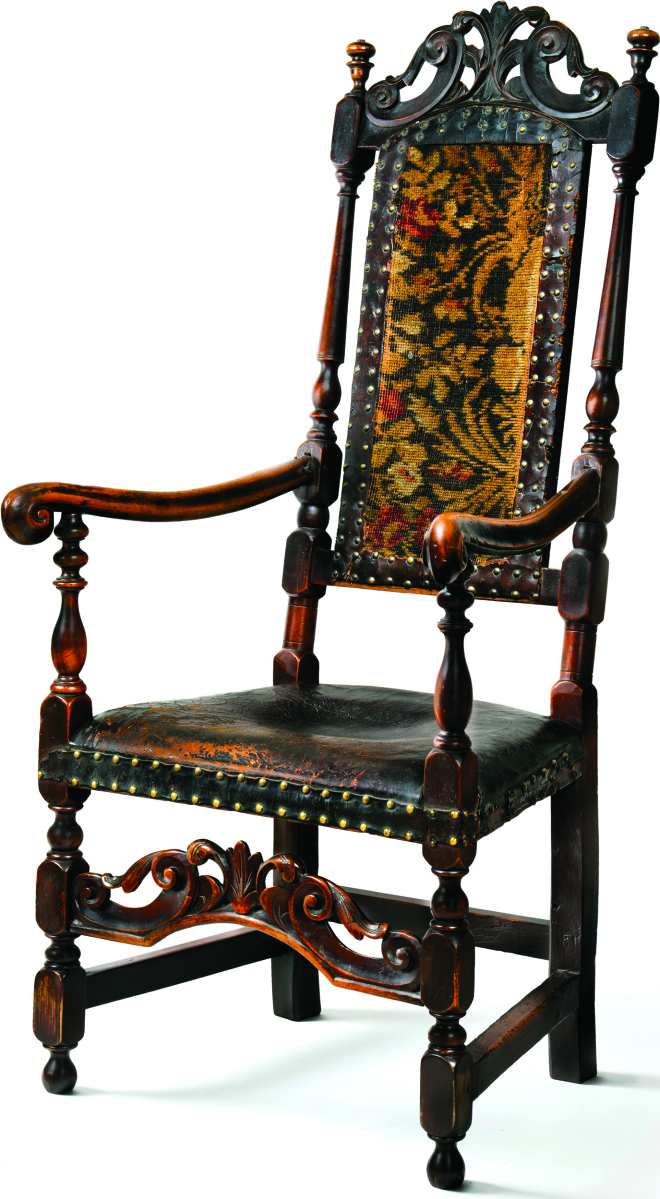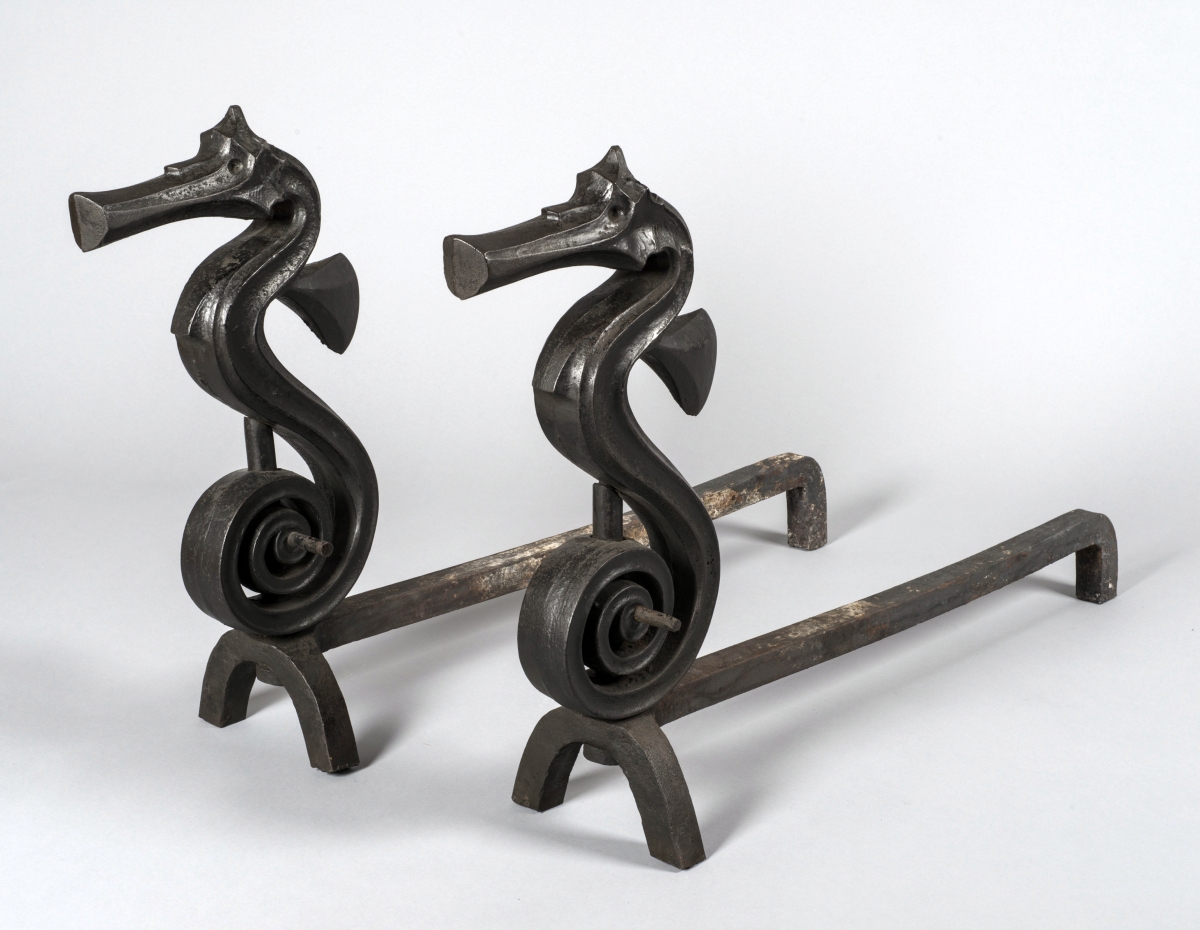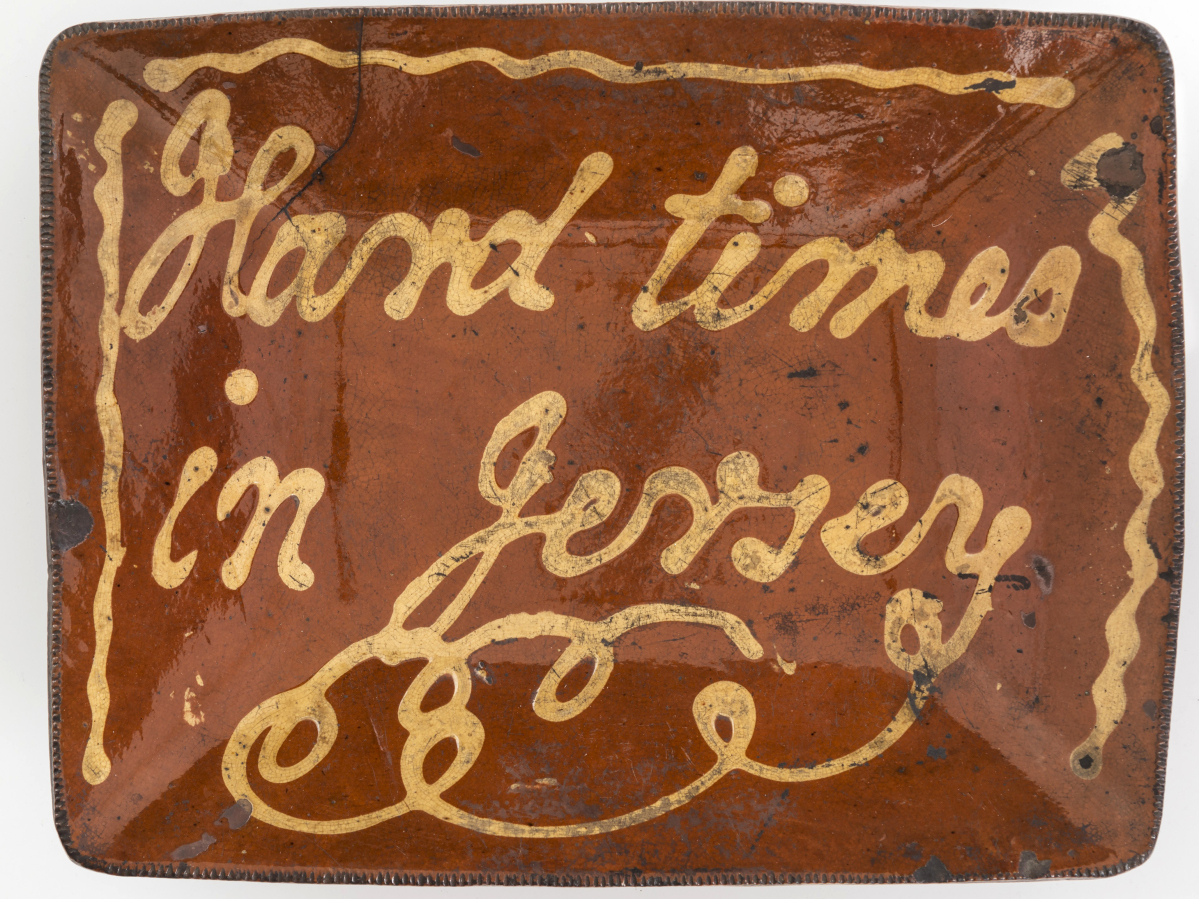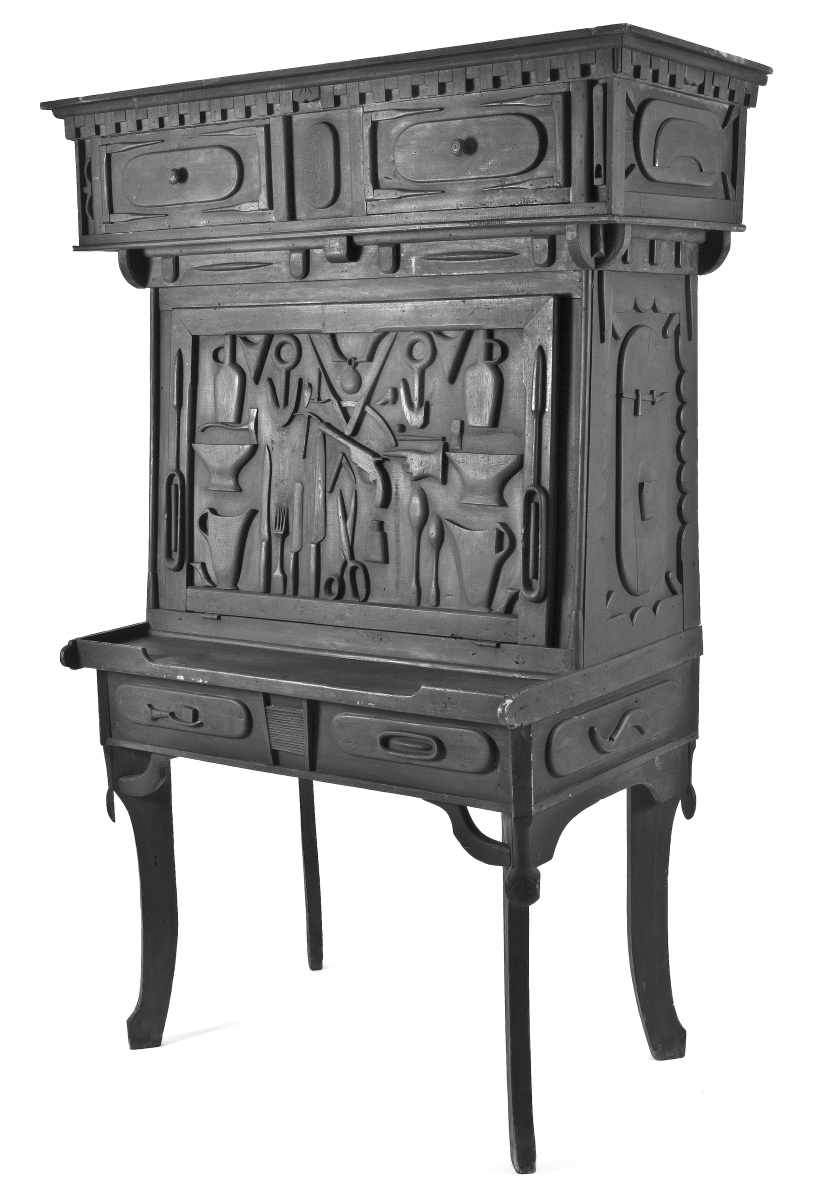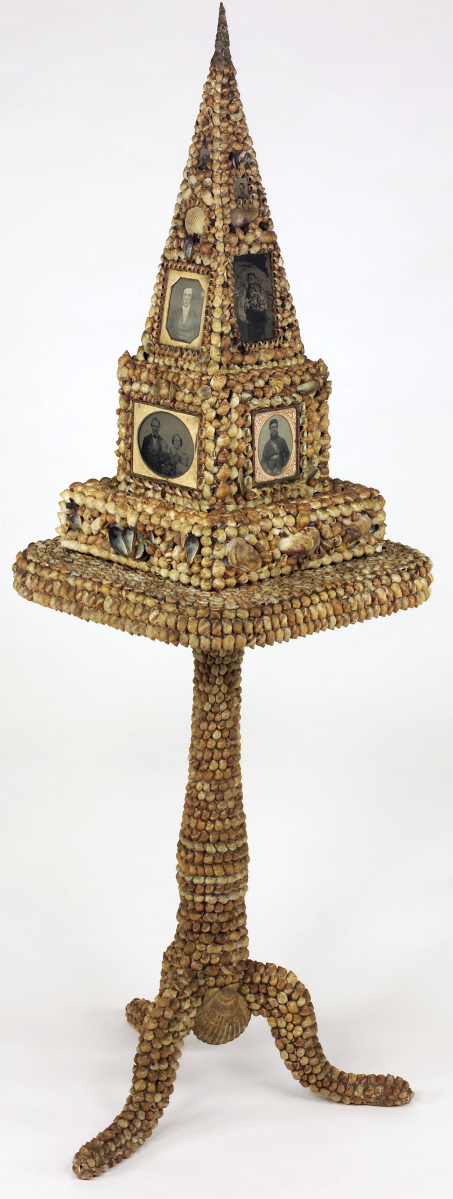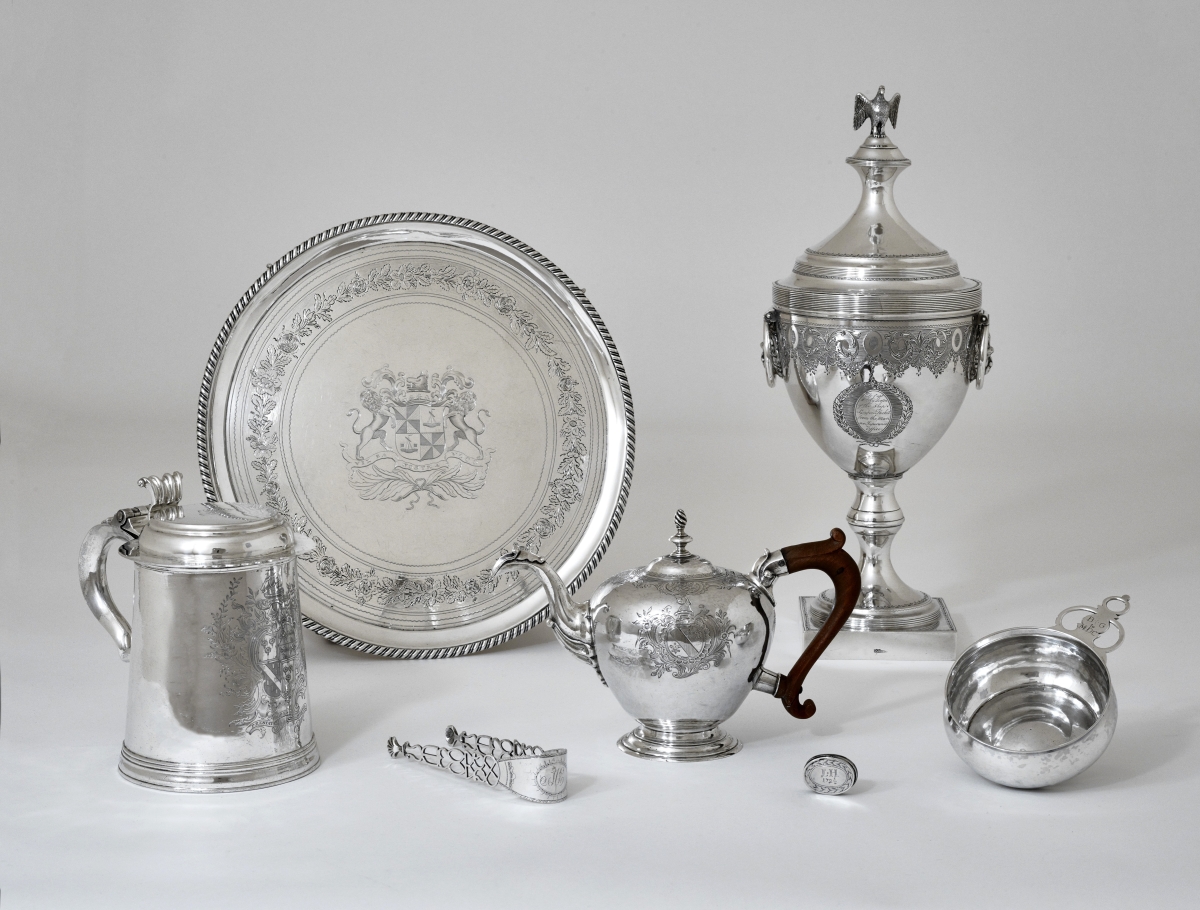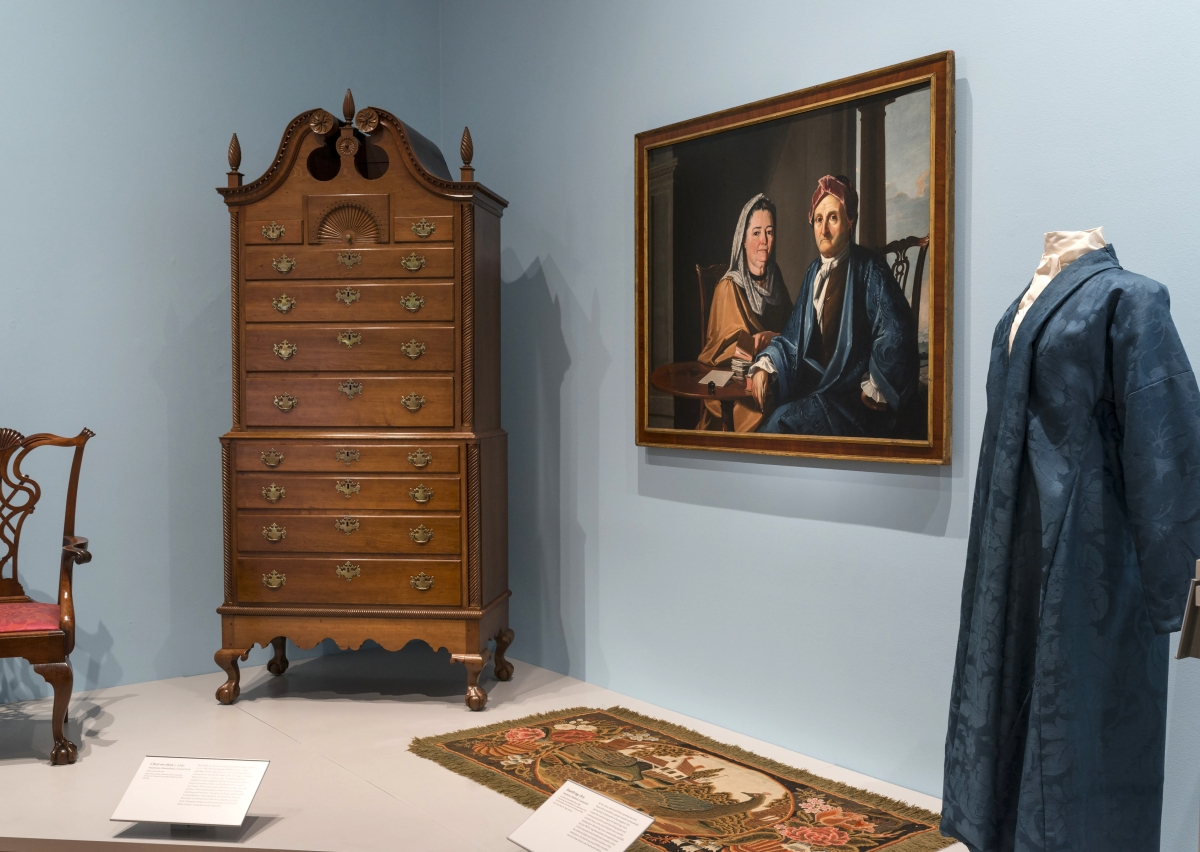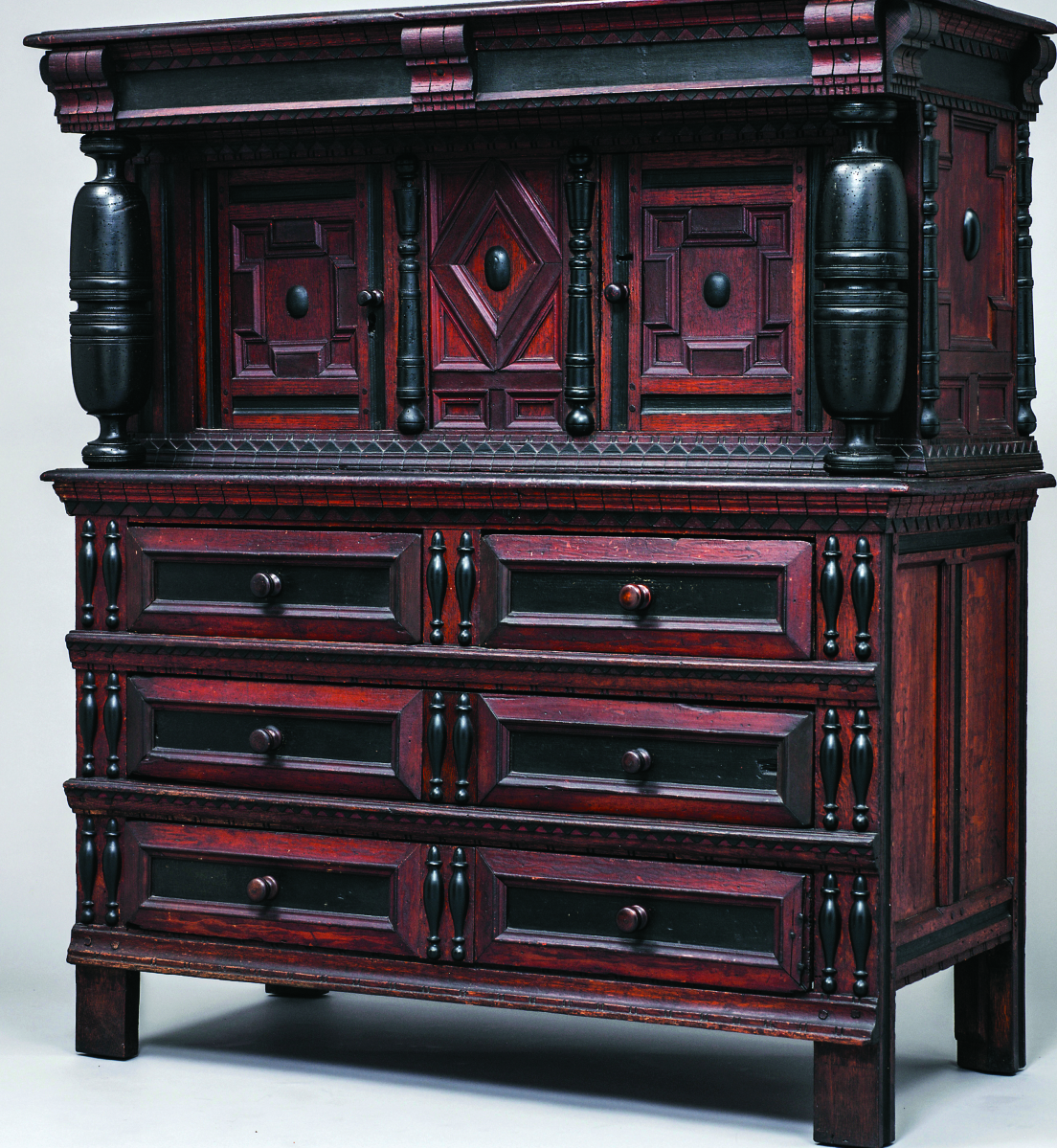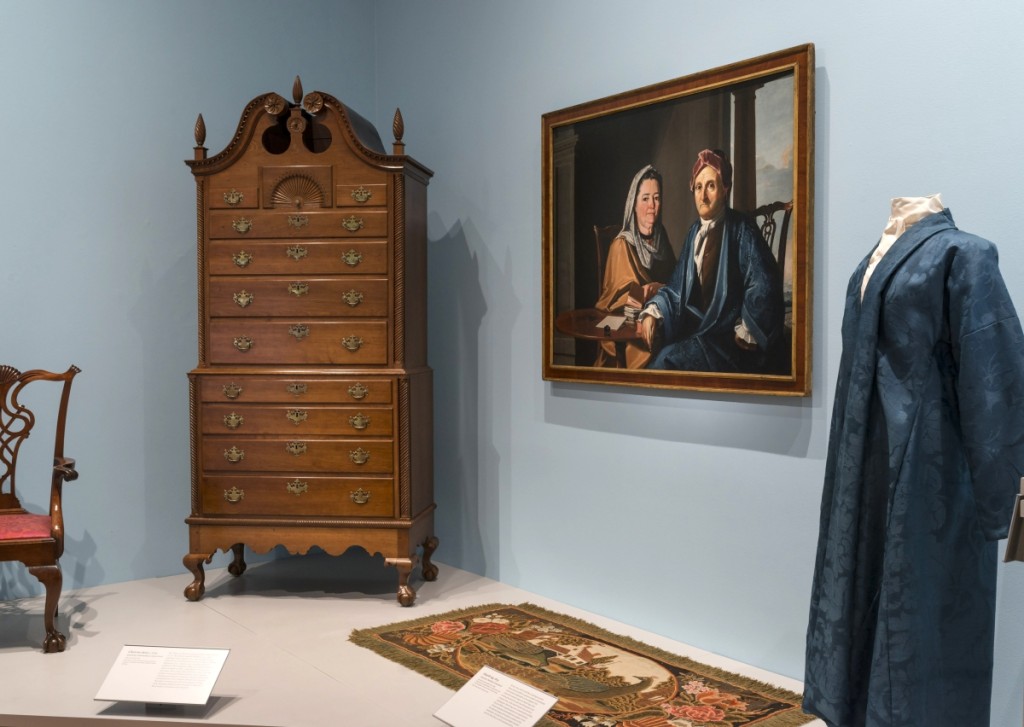
Center, “Governor Jonathan and Faith Robinson Trumbull,” a 1777–78 painting of his parents by John Trumbull (1756–1843), on loan from the Connecticut Historical Society. The canvas shows the governor wearing the blue dressing gown, right, in the Wadsworth Atheneum collection.
By Karla Klein Albertson
HARTFORD, CONN. – “Simply Splendid: Rediscovering American Design” is the first exhibition organized by Brandy S. Culp, who arrived at Hartford’s Wadsworth Atheneum in January to become the museum’s Richard Koopman curator of American decorative arts. The exhibition, a foretaste of what is to come under the curator’s direction, brings together more than 90 objects from the museum’s permanent collection, illuminating connections among key examples of American fine and decorative arts over 300 years of design history.
“The main theme of ‘Simply Splendid’ is that we connect to the greater world and each other through material goods – then and now,” Culp explains. “From textiles to fine arts, ceramics, glass and furniture, the collection is deep and broad. When I came on board, it had been on the calendar for a while to do a decorative arts exhibition in the spring. And instead of changing those plans, director Tom Loughman wanted to go forward. It was a process of going into storage and looking at the collection and previous scholarship. In fleshing out that main theme, we selected objects that had interconnected stories to tell.”
With only a few months until the show’s mid-May opening, Culp had to explore, research and organize quickly. The curator’s broad previous experience served her well. Culp earned wide recognition as curator of Historic Charleston Foundation before coming to Hartford, and served as a curatorial fellow in the Art Institute of Chicago’s department of American art before that. She wrote her master’s thesis at Bard Graduate Center on Charleston silversmiths, with a focus on Alexander Petrie and the South Carolina silver trade.
Culp found much to investigate in the museum’s galleries and vaults, which contain nearly 50,000 works ranging from Roman antiquities and baroque paintings to historic firearms and ballet design. In the American sector, the collection has been greatly enhanced by gifts from major donors. For example, in 1905, a donation of more than 1,000 objects from Elizabeth Hart Jarvis Colt included important Hudson River Valley School paintings. In 1926, J. Pierpont Morgan Jr purchased the Wallace Nutting collection of American Pilgrim Century furniture and presented it to the museum. American silver collector Philip H. Hammerslough, who focused on notable works by the country’s most important makers, gave the museum more than 650 examples, most of which were accessioned in 1983.
 “Luckily, previous experience taught me how to work fast, gather as much information as possible as quickly as possible and then move forward,” continued the curator. “In many ways, the show reflects my major philosophies about being a curator at this moment at time. The Great River was extremely important in shaping my understanding of not only the Connecticut River Valley, but the depth of the Wadsworth Atheneum collection and how it relates to the greater world of New England.” As a footnote, The Great River: Art & Society of the Connecticut Valley, 1635-1820, edited by Gerald W.R. Ward Jr and former Wadsworth Atheneum curator William N. Hosley, was published in connection with a 1985 exhibition celebrating the 350th anniversary of the permanent settlement of Europeans in Connecticut.
“Luckily, previous experience taught me how to work fast, gather as much information as possible as quickly as possible and then move forward,” continued the curator. “In many ways, the show reflects my major philosophies about being a curator at this moment at time. The Great River was extremely important in shaping my understanding of not only the Connecticut River Valley, but the depth of the Wadsworth Atheneum collection and how it relates to the greater world of New England.” As a footnote, The Great River: Art & Society of the Connecticut Valley, 1635-1820, edited by Gerald W.R. Ward Jr and former Wadsworth Atheneum curator William N. Hosley, was published in connection with a 1985 exhibition celebrating the 350th anniversary of the permanent settlement of Europeans in Connecticut.
One of the exhibition’s key displays, dear to the heart of the museum’s founders, tells the story of the Charter Oak. Culp says, “Its history and legend is extremely important to Connecticut and New England since the later 1600s. This oak tree has been so much a part of popular culture and American culture that, when it fell, the whole region went into deep mourning. Mark Twain comes to the Atheneum in the 1860s. He wanted to see Daniel Wadsworth’s great works of art, but this old gentleman took him around and showed him pieces made from the Charter Oak. We’ve had those relics in the collection since the oak fell.”
For those who have never heard the tale, the unusually large white oak tree situated on Wyllys Hyll in Hartford may have been more than 600 years old when it was felled by a storm on August 21, 1856. A symbol of American independence, the tree was said to be the hiding place for Connecticut’s Royal Charter of 1662, concealed there to prevent its confiscation by the British. At the heart of the museum’s display is a memorial painting, “The Charter Oak,” executed in 1857 by Charles De Wolf Brownell (1822-1909).
Everyone wanted a piece of this tree. Following the popular tradition of the day, a variety of serious souvenirs were made from its wood. There was a desk for Connecticut’s governor and chairs for the speaker of the house and president of the senate. The rustic chair owned by the museum and featured in the exhibition was commissioned for the city. When they did not close the sale, Samuel Colt stepped in and purchased it for the Wadsworth Atheneum. Mark Twain quipped that, if you put together everything made out of the Charter Oak, you could build a plank road from Hartford to Salt Lake City.
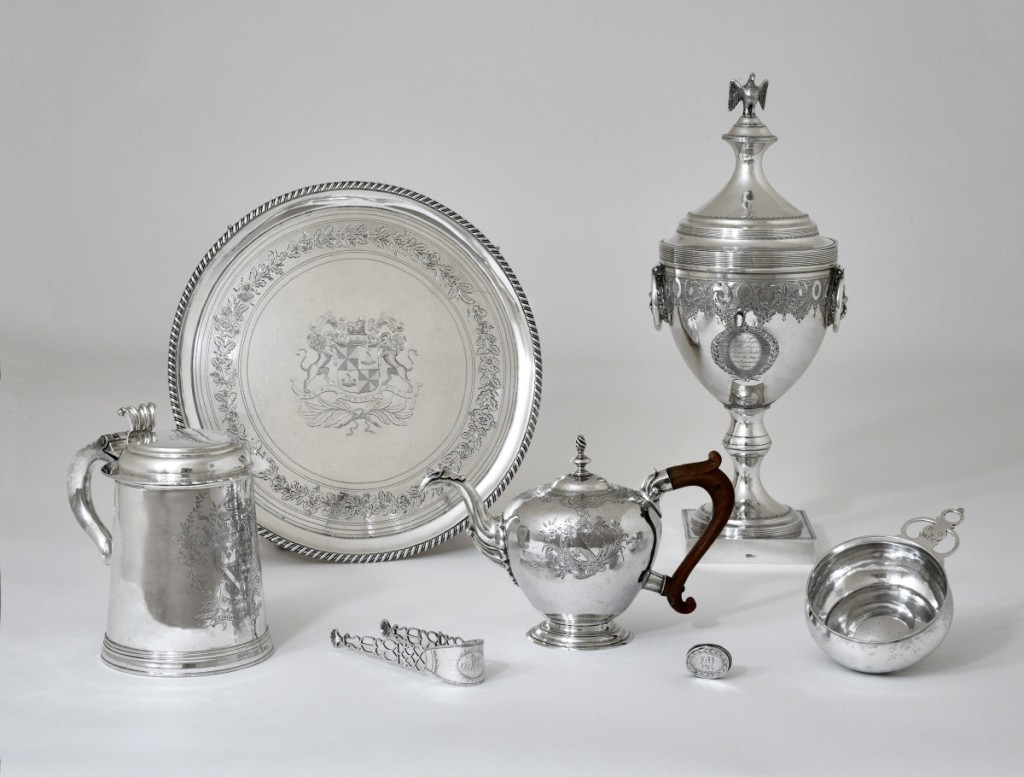
American silver collector Philip H. Hammerslough bequeathed more than 650 examples to the Wadsworth Atheneum. The selection illustrated here includes a tankard by Myer Myers (1723–1795) of New York, a teapot by John Coburn (1724–1803) of Boston and a presentation urn by Joseph Lownes (1754–1820) of Philadelphia.
Elsewhere, Culp has set up more subtle interactions to show the connection of artifacts from completely different periods. She emphasizes, “I want visitors to reacquaint themselves with the collection and rethink the connection between objects of different media, origin and age. There’s a connection between the past and the present. I believe that each era is recognizable in its design and the stories they share. If you look at an artist such as Nakashima, it’s a completely contemporary, fresh design, but he’s reviving traditional woodworking techniques and considering process, craftsmanship and quality of materials. In a way, that connects to the Wallace Nutting collection where the show begins.”
The Nutting collection is renowned for the completeness of its survey of pre-1730 furniture forms. Among the multiple examples on display is a court cupboard, 1665-73, of red oak with red cedar and maple moldings and Northern white cedar and white pine. Elsewhere in the exhibition are a graceful slate-top maple tea table from New York, 1665-1715, and a walnut dressing table from eastern Massachusetts, 1710-25.
From a later period, an intriguing example of folk art in furniture form is a fall-front desk, made around 1870 in Madison County, Miss. Acquired in 2012 from Connecticut dealer Allan Katz, who exhibited the piece at New York’s Winter Antiques Show, the desk is the work of William Howard, an emancipated slave who lived and worked on Kirkwood, a plantation owned by Mississippi Governor William McWillie and his wife, Catherine. The desk front is carefully carved with the symbols of hard labor – shovels, picks and water buckets for field work and the irons, scissors and washboards of house work. On the side, a hand points to a pistol, while the desk legs are embellished with tobacco leaves.
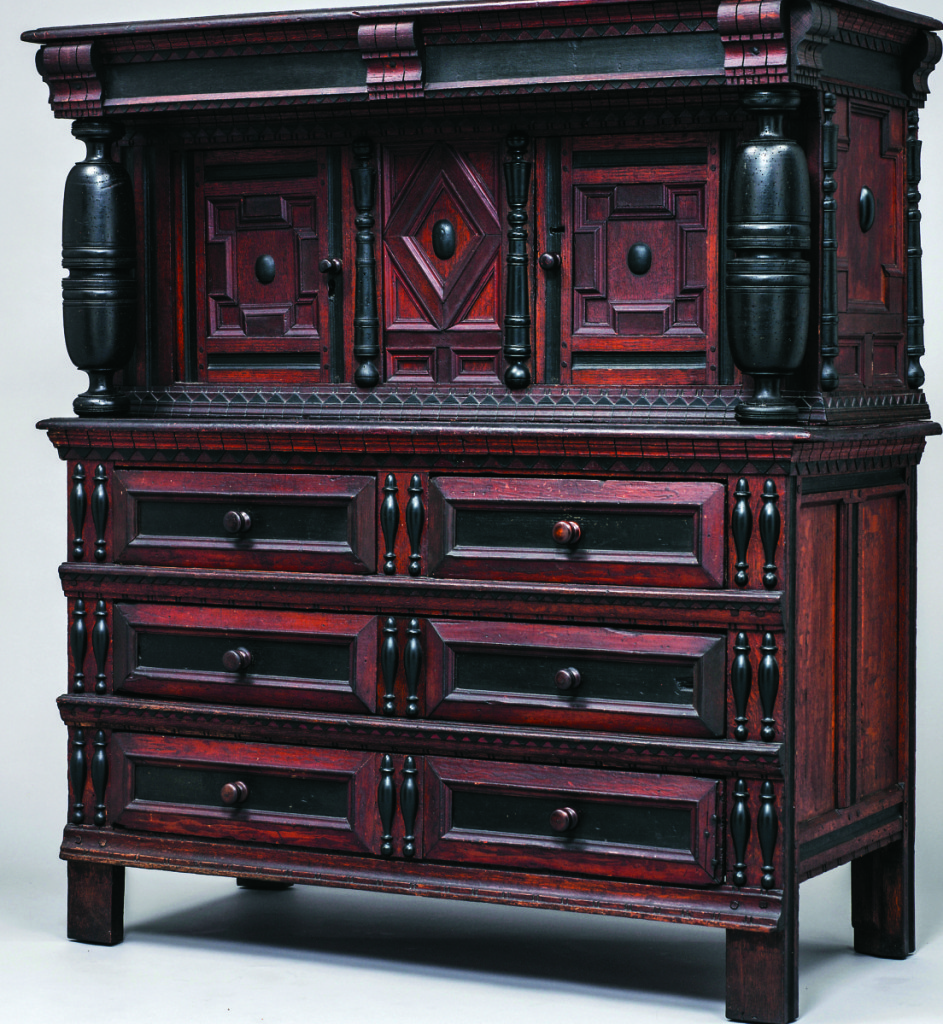
Court cupboard, 1665–73. Red oak with red cedar and maple (moldings) and Northern white cedar and white pine. The Wallace Nutting Collection, gift of J. Pierpont Morgan Jr, 1926.
Culp has retained her deep interest in silver and metalwork, which is well-represented at the museum. “We’re talking about incorporating more silver into the permanent galleries, as well as creating a permanent exhibition space for both the Hammerslough collection and the Elizabeth B. Miles collection of English silver. There’s actually an example of Southern silver in ‘Simply Splendid’. It is a very rare condiment dish by Daniel You, who was born and trained in New York and then immediately headed south to Charleston, S.C. He is someone I have researched for the last decade. His work is in the silver case with the early spoon, the Nathaniel Hurd mug, later transformed into a milk pot, and the tankard.”
After the very positive visitor response received for this exhibition, Brandy Culp is now looking ahead. “Instead of giving specifics, it’s exciting to talk about what’s in the air. Now is a fantastic time to think boldly and creatively about the American art collection at the Wadsworth Atheneum – its interpretation, exhibition possibilities and outreach opportunities. The Wadsworth Atheneum has a legacy and a longstanding commitment to American fine and decorative arts. I look forward to carrying this tradition into the future.”
“Simply Splendid: Rediscovering American Design” continues through August 13 at the Wadsworth Atheneum, 600 Main Street in Hartford, but the collection remains in perpetuity. For information, www.thewadsworth.org or 860-278-2670.
Journalist Karla Klein Albertson writes about decorative arts and design.

